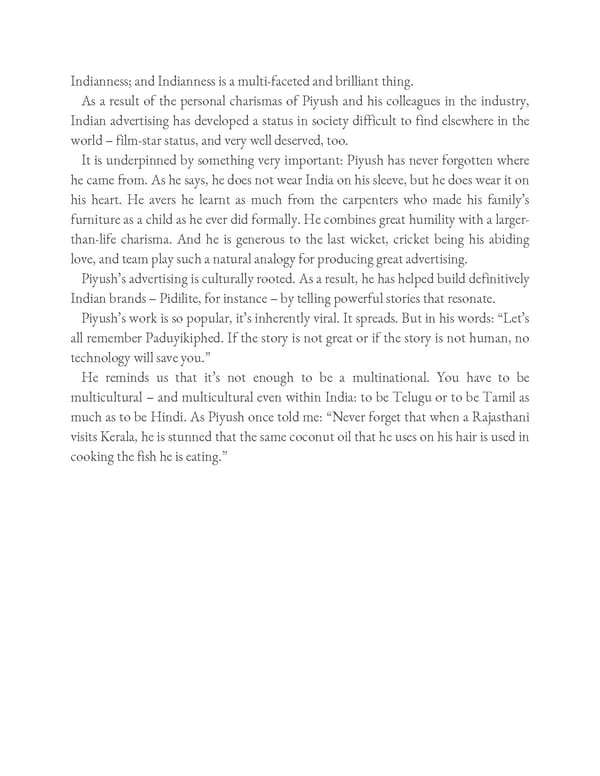Indianness; and Indianness is a multi-faceted and brilliant thing. As a result of the personal charismas of Piyush and his colleagues in the industry, Indian advertising has developed a status in society difficult to find elsewhere in the world – film-star status, and very well deserved, too. It is underpinned by something very important: Piyush has never forgotten where he came from. As he says, he does not wear India on his sleeve, but he does wear it on his heart. He avers he learnt as much from the carpenters who made his family’s furniture as a child as he ever did formally. He combines great humility with a larger- than-life charisma. And he is generous to the last wicket, cricket being his abiding love, and team play such a natural analogy for producing great advertising. Piyush’s advertising is culturally rooted. As a result, he has helped build definitively Indian brands – Pidilite, for instance – by telling powerful stories that resonate. Piyush’s work is so popular, it’s inherently viral. It spreads. But in his words: “Let’s all remember Paduyikiphed. If the story is not great or if the story is not human, no technology will save you.” He reminds us that it’s not enough to be a multinational. You have to be multicultural – and multicultural even within India: to be Telugu or to be Tamil as much as to be Hindi. As Piyush once told me: “Never forget that when a Rajasthani visits Kerala, he is stunned that the same coconut oil that he uses on his hair is used in cooking the fish he is eating.”
 Ogilvy on Advertising in the Digital Age Page 432 Page 434
Ogilvy on Advertising in the Digital Age Page 432 Page 434